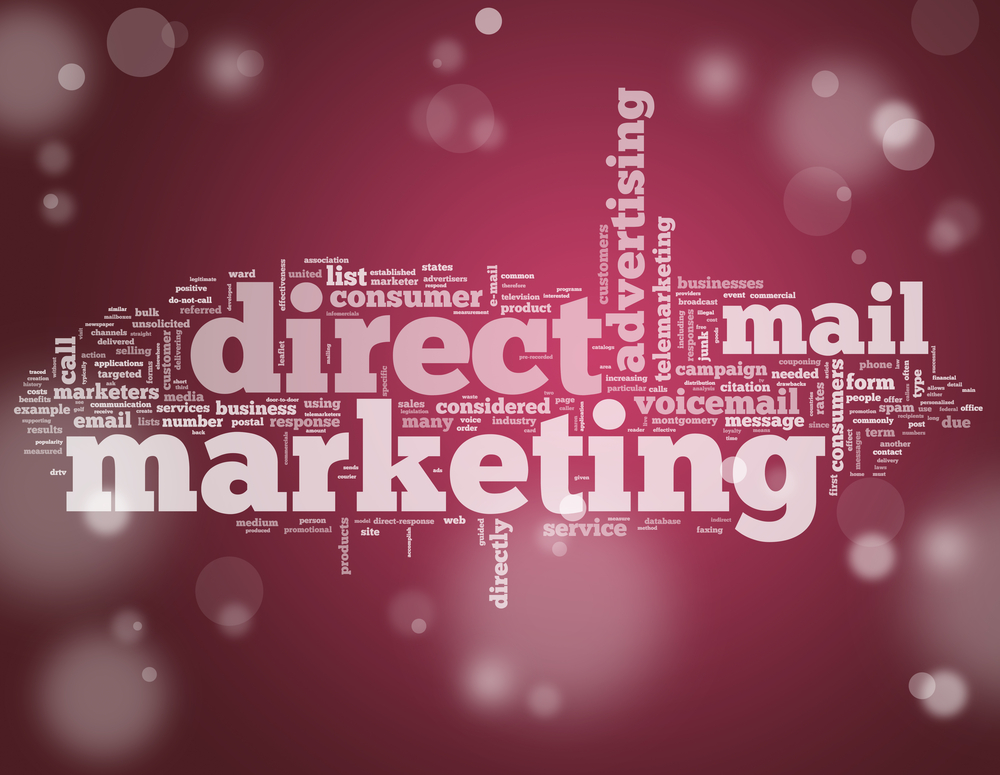 Amidst all the hype about digital and data, direct marketing never went away. Now, armed with these tools, it is bigger, better and a lot more effective according to some Ireland’s leading DM practitioners who share their views with IMJ.
Amidst all the hype about digital and data, direct marketing never went away. Now, armed with these tools, it is bigger, better and a lot more effective according to some Ireland’s leading DM practitioners who share their views with IMJ.
Peter Wheelehan, Managing Director, DMCM
 There are huge opportunities for direct marketing agencies (and by association clients) who want to cleverly and creatively use their data, whether in traditional DM channels or by evolving the principles of DM in clever ways in to other channels by creating more direct response-driven and engaging content for above the line on online digital channels. But also by properly tracking and measuring campaigns and closing the loop on response and results to see they actually performed in terms of return on investment. And to learn and improve for future campaigns too.
There are huge opportunities for direct marketing agencies (and by association clients) who want to cleverly and creatively use their data, whether in traditional DM channels or by evolving the principles of DM in clever ways in to other channels by creating more direct response-driven and engaging content for above the line on online digital channels. But also by properly tracking and measuring campaigns and closing the loop on response and results to see they actually performed in terms of return on investment. And to learn and improve for future campaigns too.
It’s probably true to say that there has been less traditional direct marketing, such as direct mail, happening in recent years. But with less activity (i.e. less clutter) it’s been easier to get cut-through as we see smaller and more targeted campaigns that are yielding better response and conversion rates and higher average order sizes as a result of this smarter thinking.
Having said that, the pendulum does seem to be swinging back now as the cleverer clients are taking advantage of the opportunities in the direct mail channel in particular, where clever creative ideas can be brought to life and then evolve in to other channels such as social media and/or traditional above the line media such as press, radio and so on. All this represents an opportunity for clients who want to take advantage by cleverly utilising their databases to profile customers and use these insights to then target best prospects and the most appropriate media channels based on the profile or persona of their “typical” best customer.
Not so long ago people expected cinema-going numbers to drop off significantly with the advent of live streaming from the likes of Netflix. In fact, what happened was cinema figures went up. Why? Because that trip to the cinema became that little bit more special and that’s why cinema figures actually went up – people valued it more!
We’re seeing something similar in terms traditional DM. Many clients continue to spend massively in digital and above the line channels but are struggling to get real cut-through or clearly measure their return on their investment. DM cuts through the clutter and gets directly in to the hand of the recipient in a creative and engaging way.
In doing so DM creates a (physical) engagement with brands that both digital and above the line channels simply can’t match. And just as importantly it can be ring-fenced for forensic tracking and measurement!
One of the biggest threat to DM is clients understanding of the value of traditional DM channels and how powerful it can be when done right. The fact that less of it is happening makes it more effective. A good creative idea can start with DM but evolve and be worked in to other channels in a creative way. Many of our clients started working with us through direct and database marketing, but are now challenging us to use DM principles to create more engaging direct response advertising and digital content.
A further threat to agencies is the media fragmentation, where most agencies simply don’t have the depth of skills and expertise that clients require in-house. So for me the must-have marketing skills required in modern day agency executives is a multi-skilled approach and a can do attitude. They need to know and understand all above the line, below the line and digital channels. So while they can’t possibly have all the skills and expertise required to execute everything in a 360-degree campaign brief, they know how and will be able to make it happen by leveraging internal and external resources to deliver the best possible campaign for their clients.
James Dunne, Senior Planning Director, Epsilon
 Isn’t it weird that many of the world’s leading creative shops right now are not only ‘digital’ but also originated from that peculiar catch-all state once referred to (dismissively by some) as ‘below-the-line’?
Isn’t it weird that many of the world’s leading creative shops right now are not only ‘digital’ but also originated from that peculiar catch-all state once referred to (dismissively by some) as ‘below-the-line’?
From global networks like Rapp, Wunderman and Sid Lee, right down to individual leaders, these agencies have their roots in the nebulous world of ‘direct’ – which begs the obvious question – what is it about the direct DNA that makes the difference?
Maybe it’s because having ‘direct’ DNA delivers that killer app that’s fundamental to emergent channels like mobile, native content and social, which we all wax lyrical about. Direct-thinkers have always been focused on getting closer to people – not just evangelising to them from the safe, controllable, clinical distance of old-school brand building – but by harvesting data and context to deliver ideas that trigger opens, reads, redemptions and shares. Diversity creates value. Today, we call this omni-channel, life cycle comms.
Maybe it’s because having a ‘direct’ perspective to briefing on a creative business challenge is about gaining response with action. No idea really matters until it’s intrinsically measurable and actionable. Direct-heads have been obsessed with open rates, response testing, data mining, CTA’s, CPA and format design for more than a generation. Creative craft creates response. Today, we call this UX, media innovation, behavioral marketing and data analytics.
Maybe it’s because going ‘direct’ means taking it to the street and to the store. Putting the brand in the hand of real people through testing, tastings and in-store presence; and recruiting and rewarding people through RM and personalised loyalty mechanics. Relationships create repeat purchase/usage. Today, we (lazily) call this experiential, community management and ‘shopper marketing’.
The agencies that are thriving right now during the omni-channel revolution (yes, another revolution folks!) have copped on to the fact that as media has fragmented and choice has exploded; investing in craft and cultivating relationships is where the whole kit and caboodle is. And direct agencies were the first to see the potential of digital because they instinctively got that we humans are interactive, social creatures and that there’s more value to be realised in brand response than brand repose.
Whole industries have been, or are in the process of being, dis-intermediated: from travel agents and insurance to GP’s. Direct is not simply a marketing approach; it’s an ideology and a model.
It isn’t that direct marketing has a future. It is that the future of business is getting more direct. More immediate. More responsive. More personal.
Chloe Murphy, Strategic Planner, Boys and Girls
 “Not everything that counts can be counted, and not everything that can be counted counts” – Albert Einstein.
“Not everything that counts can be counted, and not everything that can be counted counts” – Albert Einstein.
The beauty of Direct Response is in its ability to provide us with measurable and actionable insight – what’s worked to drive a response and what hasn’t. We can be incredibly granular in assessing the performance of the media, offer, format… even the creative. Through consistent testing, we naturally build up a Direct Response checklist of do’s and don’ts. Every new campaign can be structured around this set of rules, and through the repetition of this approach we establish what our ‘winning formula’ is.
But the measurability of Direct Response can also be its greatest impediment. When we’re always referring back to our ‘winning formula’ and allowing it to steer our decision making, we’re being deliberately formulaic. And while this may yield results for many aspects of a campaign, too often is this type of systematic thinking also applied to the creative. In fact, in many Direct Response ads there is no actual creative idea, just a backdrop for the multiple direct response devices employed. This is flawed for two reasons.
The first is that relying on this type of creative gives the brand little room to connect with its audience beyond an attractive offer, leaving consumers with no understanding of the brand behind it. So when there’s no offer running, why would they consider you? Building brand pillars takes time and investment, and although they may not be a priority when the brand is in acquisition mode, they are important when it comes to making those switchers loyal, or for when the well of price cuts and offers dries up.
The second (and most obvious) reason this is flawed is that formulaic creative is unlikely to cut-through. A lack of creativity in a world where consumers are exposed to thousands of messages daily, means your ad is less likely to be remembered or noticed.
By all means pay due diligence to the Direct Response rules but remember that when this formulaic thinking is applied to the creative it potentially removes the two most effective weapons we have in our arsenal – the ability to connect and cut-through. Good creative advertising should be able to cut-through, drive a response and have beneficial brand attribution all at the same time!
Fiona Heffernan, Head of Post Media, An Post
 Direct mail is the original direct marketing channel and being the first has its benefits. Of all direct marketing channels, consumers say is it first when it comes to enjoyment, first for loyalty and first for trust$ . While others have come and gone, today direct mail is more powerful than ever at delivering results for Ireland’s brands.
Direct mail is the original direct marketing channel and being the first has its benefits. Of all direct marketing channels, consumers say is it first when it comes to enjoyment, first for loyalty and first for trust$ . While others have come and gone, today direct mail is more powerful than ever at delivering results for Ireland’s brands.
The growth in direct channel choice in recent years has changed the game when it comes to how agencies and brands use mail. Direct mail as a channel is often used as a strategic retention tool – for loyalty, up-selling or x-selling for example however the role of direct mail in marketing continues to evolve – and there is a definite new trend emerging.
As media fragmentation accelerates with consumers taking control, never before has channel integration been so critical – especially for brands that live online. Now direct mail is the perfect bedfellow of virtually all channels as part of integrated campaigns, this is most apt right now with the growth of digital ad blocking. This growing consumer choice is opening up new opportunities for mail as an online driver, in fact 54%$ of Irish consumers will go online to find out more on receipt of a relevant piece of direct mail.
The success of mail as an online driver was celebrated at this year’s An Post Smart Marketing Awards, with brands such Littlewoods and The Digital Marketing Institute/Javelin Group winning golds for the incredible results they achieved from their campaigns through using direct mail to grow business. All of the winners are showcased at www.anpostsmartmarketing.ie.
So there you have it, whether it is for reward, acquisition or growth in online traffic, mail does the business. The team at Post Media are available to talk through how to make direct mail central to marketing plans and work through ideas and guidance when it comes to running a campaign.
First published in Irish Marketing Journal (May 2016)© to order back issues please call 016611660


























